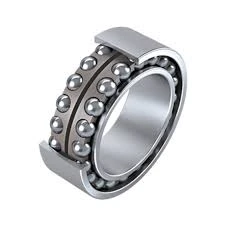
Dec . 24, 2024 10:22 Back to list
ball bearing 628zz
Understanding the 628ZZ Ball Bearing A Comprehensive Guide
Ball bearings play a crucial role in reducing friction between moving parts in various mechanical applications, enhancing efficiency and longevity. Among the myriad of ball bearings available in the market, the 628ZZ ball bearing stands out due to its unique features and versatile applications. This article explores the key attributes, uses, and specifications of the 628ZZ ball bearing, making it an essential component for both hobbyists and professionals alike.
What is a 628ZZ Ball Bearing?
The 628ZZ ball bearing is a type of deep groove ball bearing, characterized by its enclosed design which features metal shields on both sides. The 628 in its name refers to the size and series of the bearing, while ZZ indicates that the bearing has these metal shields that protect it from dust, dirt, and moisture, ensuring longevity and reliability in various environments. This type of bearing is known for its low frictional resistance, which makes it ideal for high-speed applications.
Specifications of 628ZZ Ball Bearing
Understanding the specifications of the 628ZZ ball bearing is key to identifying its suitability for different applications. Here are the crucial dimensions
- Inner Diameter (ID) 8 mm - Outer Diameter (OD) 24 mm - Width (W) 8 mm
The materials used in the construction of the 628ZZ bearing usually include high-carbon chromium steel, which is known for its strength and durability. The races are precisely manufactured to accommodate the steel balls inside, ensuring a consistent and smooth rotational motion.
Key Features
1. Sealed Design The metal shields on both sides of the bearing provide excellent protection against contaminants while maintaining lubrication. This feature significantly extends the bearing's service life and reduces the need for frequent maintenance.
2. Low Friction The deep groove design permits both radial and axial loads, facilitating smooth motion and lowering friction. This characteristic is essential for applications requiring high rotational speeds and reduced energy consumption.
3. Versatility The compact size and robust construction of the 628ZZ ball bearing allow it to be used in a wide range of applications, from electric motors and household appliances to bicycles and robotics.
ball bearing 628zz

4. Cost-Effective The 628ZZ ball bearing offers an excellent balance of performance and affordability. With its widespread availability, it becomes a popular choice for many engineers and hobbyists.
Common Applications
The 628ZZ ball bearing’s robustness and adaptability make it suitable for an extensive range of applications
- Electronics Found in computer cooling fans, hard drives, and other electronic devices where minimal friction and durability are paramount.
- Model Building Frequently used in RC cars, drones, and other model kits where precision and reliability are critical.
- Household Appliances Commonly used in blenders, washing machines, and various kitchen appliances that require smooth operation.
- Industrial Equipment Utilized in conveyor systems, pumps, and various types of machinery that require efficient motion control.
Maintenance and Replacement
To ensure the longevity of the 628ZZ ball bearing, it is important to keep it clean and free from contaminants. Its sealed design minimizes the need for lubrication, but inspection and replacement should be routine, especially in high-use environments. Signs that a bearing needs to be replaced include unusual noises, excessive heat generation, or visible wear and tear.
Conclusion
The 628ZZ ball bearing is a small yet vital component that contributes significantly to the functionality and performance of various devices. Its sturdy construction, low friction, and versatility make it a preferred choice among manufacturers and DIY enthusiasts. Whether you are assembling a simple project or designing complex machinery, understanding the benefits and specifications of the 628ZZ ball bearing can enhance the efficiency and reliability of your applications, making it an indispensable part of modern engineering.
Latest news
-
Grooved Ball Bearing Design and Functionality
NewsJun.04,2025
-
Concrete Mixer Bearing Load Capacity Testing
NewsJun.04,2025
-
6004 Bearing Dimensions in Robotic Joint Designs
NewsJun.04,2025
-
Advantages of Single-Row Deep Groove Ball Bearings
NewsJun.04,2025
-
Applications of Deep Groove Ball Bearings in Automotive Systems
NewsJun.04,2025
-
Innovations in Bearing Pressing Machine Design
NewsJun.04,2025
